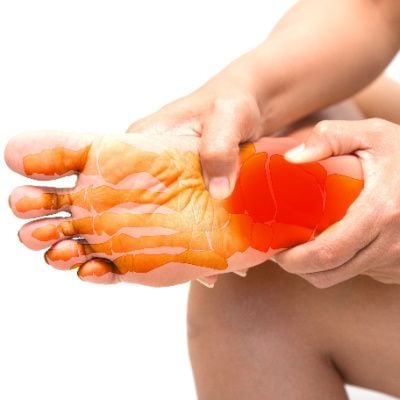 Neurolysis, a therapeutic procedure gaining recognition in podiatric medicine, holds promise for those seeking relief from nerve-related foot conditions. This article dives deep into the nuances of neurolysis, exploring its applications, benefits, and what individuals can expect from this innovative foot-focused intervention.
Neurolysis, a therapeutic procedure gaining recognition in podiatric medicine, holds promise for those seeking relief from nerve-related foot conditions. This article dives deep into the nuances of neurolysis, exploring its applications, benefits, and what individuals can expect from this innovative foot-focused intervention.
Understanding Neurolysis
Delving into the fundamentals, this section sheds light on the essence of neurolysis. From the Greek words "neuron" (nerve) and "lysis" (to loosen), neurolysis involves targeted interventions to alleviate nerve compression and restore optimal function.
Navigating Nerve Compression in the Foot
This section elucidates the common scenarios leading to nerve compression in the foot. Whether due to injury, inflammation, or anatomical factors, nerve compression can result in pain, tingling, and reduced mobility, emphasizing the need for effective interventions like neurolysis.
Signs and Symptoms
Examining the telltale signs indicates that neurolysis might be a suitable option. From persistent foot pain to altered sensation, recognizing these symptoms becomes crucial for timely intervention and improved quality of life.
Diagnostic Approaches in Neurolysis
Exploring the diagnostic landscape, this section outlines how healthcare professionals assess the need for neurolysis. From thorough clinical examinations to advanced imaging techniques, ensuring an accurate diagnosis is paramount before proceeding.
Neurolysis Techniques in Podiatric Care
- Chemical Neurolysis: Investigating the use of chemical agents to break down or inhibit nerve function, providing relief from pain and discomfort.
- Surgical Neurolysis: Delving into the surgical aspect, where nerve compression is physically released through meticulous procedures.
Indications for Neurolysis in the Foot
Highlighting specific conditions where neurolysis emerges as a viable treatment option. This section emphasizes scenarios like Morton's neuroma, tarsal tunnel syndrome, and diabetic peripheral neuropathy, where neurolysis can offer targeted relief.
The Neurolysis Procedure: What to Expect
Navigating the patient's journey through neurolysis, from the initial consultation to the actual procedure. Demystifying the steps involved and providing insights into preoperative preparation.
Risks and Considerations in Neurolysis
Acknowledge the potential risks and complications associated with neurolysis. This section emphasizes transparency and the importance of informed consent, empowering patients to make educated decisions about their care.
Post-Neurolysis Care and Recovery
- Pain Management Strategies: Discuss postoperative pain management techniques, including prescribed medications and non-pharmacological approaches.
- Rehabilitation and Physical Therapy: Outlining the role of rehabilitation in optimizing outcomes, promoting healing, and preventing complications.
Conclusion
In conclusion, neurolysis stands as a beacon of hope for individuals grappling with nerve-related foot issues. Patients can confidently approach neurolysis by unraveling its intricacies, understanding the conditions it addresses, and exploring the procedural journey. Seeking guidance from experienced podiatric professionals ensures personalized care, maximizing the potential for positive outcomes and paving the way for a life unburdened by foot nerve complications.
Disclaimer:
The information on this website is provided for educational and information purposes only and is not medical advice. Always consult with a licensed medical provider and follow their recommendations regardless of what you read on this website. If you think you are having a medical emergency, dial 911 or go to the nearest emergency room. Links to other third-party websites are provided for your convenience only. If you decide to access any of the third-party websites, you do so entirely at your own risk and subject to the terms of use for those websites. Neither Michael Stein, DPM, nor any contributor to this website, makes any representation, express or implied, regarding the information provided on this website or any information you may access on a third-party website using a link. Use of this website does not establish a doctor-patient relationship. If you would like to request an appointment with a health care provider, please call our office at (510) 483-3390.












